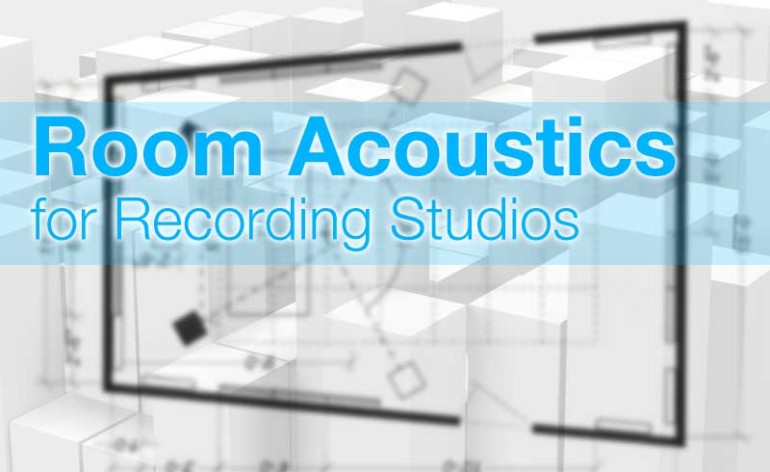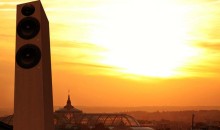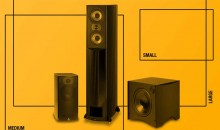Room Acoustics for Recording Studios
Back in the day, room acoustics for recording studios used to be handled by a “live end, dead end” design. In truth, there are a lot of reasons why this still works and why a lot of experienced room designers still adopt this method. Live end, dead end is where the front of the room is pretty much “dead”. Sound absorption materials are implemented to ensure that your ears are only receiving (from the speakers, anyway) the initial point source of the sound. The rear of the room, however, utilizes a design which includes diffusion to create a live space while breaking up any standing waves or major modal issues.
Tip 1
Calculate room modes (bass peaks) based on the dimensions of your recording studio. Use these calculations for determining not only the optimal speaker placement in your studio, but where you should place your mixing desk and thus your mix position.You want to sit in a null—a place that is neither a peak nor a trough (dip).The only problem with live end, dead end room design is that it’s a tad unpredictable. The models for these rooms are almost impossible to calculate without extremely sophisticated systems and they don’t lend themselves to good predictability when rooms widths and depths need to be changed from studio to studio.
[top-seller category_id=’66’ product_count=’4′ title=’Popular Room Acoustics Products’]
Rooms Acoustics for Recording Studios vs. Home Theater
Room acoustics for recording studios differs from theater or home theater acoustics in several ways. The biggest way in which acoustics for recording studios differ is the goal. A recording studio really only needs one good seat—that of the engineer. It’s also largely a near-field scenario, with a high concern of even frequency response and achieving a wide soundstage. But when you’re dealing with a sing;e listening position—and not an entire movie theater or even a home theater space—you save a lot of headaches. You can better deal with some unpredictability and general rules make it a lot further than they do in a space where you’re attempting to bring a wider space into audio nirvana.
Tip 2
Achieving a “live end, dead end” studio isn’t a bad thing. If you want to do this , however, be sure to work backwards from achieving a smooth frequency response to the mixing seat. Also ensure that you achieve the widest sound stage possible from your speakers, positioning and moving them as needed.Another way in which rooms acoustics for recording studios differ from the home theater is that you are often dealing with a much different mix. Recording studios are often using near full-range speakers and rarely incorporate subwoofers into the room. There’s good reason for this as recording studios (we’re talking about music studios here in case you’re wondering) are mixing and mastering for the two-channel consumer. They just are. The simple fact is that most people who listen to music are doing so on a stereo system as opposed to a 2.1 setup. That natters since the recording studio is where you are mixing the very music that needs to sound good on those systems. Calibrating and keeping a stereo system properly configured is infinitely easier than introducing a subwoofer, whose incorrect level settings could potentially destroyed a piece of music.
Tip 3
Don’t forget the ceiling! One of the things many people forget is to think in three dimensions. Your ceiling is a great place for creating standing waves in a room. Should that happen to occur where you’re sitting, then you may end up pushing or trimming certain frequencies to achieve a good mix—and then finding that this sounds incorrect when played back somewhere else.Modern Room Acoustics for Recording Studios
As room acoustics began to be studied to a much larger extent in the past decade or so, patterns began to emerge. Organizations like THX have been aware for quite some time as to the issues with low frequency modes and concerns for predicting low frequency response across a variety of listening positions. In the recording studio, it began to become very clear that modes and acoustics could be very accurately predicted in a rectangular space. This led to advanced acoustics sciences which could treat rooms with a modicum of predictability in the results.
Tip 4
Bass traps and Helmholtz resonators can really help to “scrub” low frequency issues from your room, but they have to be built correctly and they have to be large enough to make a difference. Properly placed, these can serve to effectively even out bass response in your studio.And if you can truly accurately predict the results of your room acoustic treatments before placing them in a room—and then measure and confirm—you’re going to look like Scotty from the Enterprise (a miracle worker and a genius).
Room acoustics for recording studios are taking modern science and applying it to a more traditional design which can yield huge benefits. Some studios, for example, have false walls that allow bass waves to bass through and get collected by well-placed traps. The “frame” of the room (its true acoustical outer boundaries) are rectangular in nature—but you’d never know this from within the studio.
Tip 5
Keep it live! You don’t want a dead room unless you’re building a commercial movie theater. A live room is what will give you music life and ensure you don’t make major errors in translating that recording to a stereo mix. A live room has “life” and uses a good mix of diffusion rather than relying on absorption for everything.Recording Studios in the Home
Not only has the trend towards new calculated methods for room acoustics infiltrated the professional space, as more and more studios are moving into the home, these techniques are following there as well. It’s helping provide a new level of achievement and sound quality from these home recording studios that was never before possible. We’re not sure if it’s these techniques that precipitated the migration to home studios, or vice versa, but in either case the trend doesn’t seem to be letting up.
Conclusion
These are just some of the ways in which advancements in room acoustics for recording studios are changing the way things are done. And they are changing things for the better.
Of course the modern trend towards overly-compressed, near-distorted music doesn’t help, but that’s not the fault of the room or its designers.







Pingback: Getting Your Music Recorded | Diana Rasmussen Music